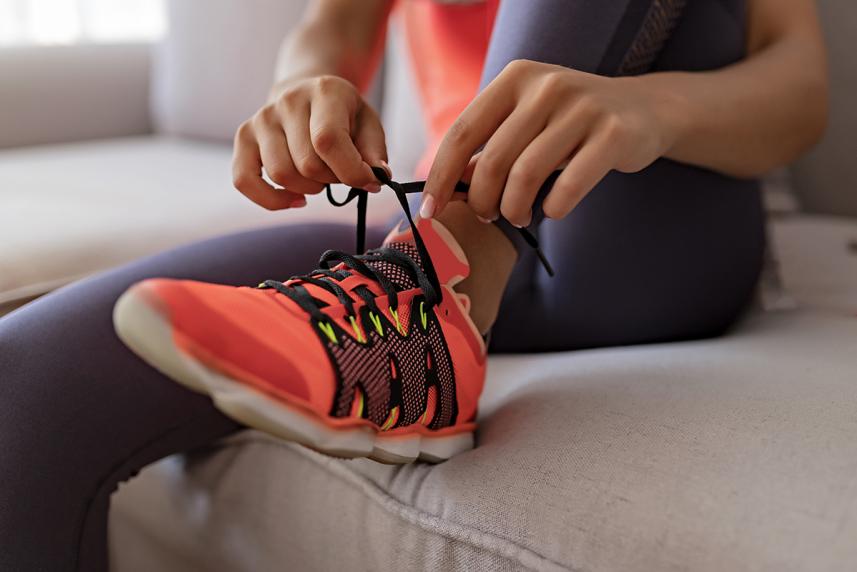
We have you covered — schedule a virtual visit today. No insurance required.

Surprise: You don’t have to be an athlete to get this itchy skin condition. Here’s what you need to know — and how to get relief
You take off your shoes and socks and notice it: an itchy, scaly, red rash between your toes. It’s definitely not pretty. But don’t panic. You probably have a case of athlete’s foot.
And you don’t have to play sports to get it. This highly contagious fungal infection can affect just about anyone.
The good news is that it’s not hard to clear up. But you do need to take some precautions. Learn the signs, symptoms and treatments for this common skin condition.
Athlete’s foot (also known as tinea pedis) is a common skin disease. The fungus that causes athlete’s foot thrives in warm, moist conditions.
Many people pick up athlete’s foot by walking barefoot in moist public places, such as a pool deck or locker room, according to the American Academy of Dermatology. Wearing sweaty shoes can trigger a case, too. And you can also get it from someone in your own household by sharing towels, bath mats or shoes.
It’s quite contagious. It’s possible to infect many people at once by walking barefoot in a wet area. You can even spread the fungus to other parts of your body if you scratch your infected feet, according to the Mayo Clinic.
“There are many other factors that raise your chance of getting athlete’s foot,” says Andrew Wilson, DPM. He’s a podiatrist at Mercy Personal Physicians in Lutherville, Maryland. These include:
Are you spending too much on medication? You might be surprised by what you can save on prescriptions at the Optum Store.
People often self-diagnose athlete’s foot, says James Geiger Jr. He’s a podiatrist at Northwestern Medicine Palos Hospital in Palos Heights, Illinois. You can probably figure out you have it just by looking at your feet. “By the time a patient goes to the doctor, they have usually already used over-the-counter medications,” he says.
The rash most commonly shows up between your toes. But other parts of your feet can also be affected. Symptoms include:
(Wondering if you might have eczema and psoriasis instead? Read up on those skin conditions here.)
“The majority of cases are minor and can be treated in 2 weeks,” says Dr. Wilson. Your first line of defense: Get an over-the-counter topical treatment such as terbinafine, clotrimazole or tolnaftate. These anti-fungal medications come as ointments, powders or sprays.
If your symptoms aren’t going away or are getting worse, call your doctor. They may prescribe a prescription-strength lotion.
In more severe cases, your doctor might suggest an oral antifungal medication or antibiotics. “Check between the toes for any small abrasions from scratching,” Dr. Wilson says. “And check for redness, warmth or a sudden increase in pain. These all need immediate medical care.”
Stubborn infections can take 4 to 6 weeks to clear up.
Try these smart strategies to reduce your risk of catching athlete’s foot in the first place.
Don’t go barefoot in public. Wear shoes in public showers, locker rooms, gyms and pools. If you have athlete’s foot, avoid these places so the condition doesn’t spread to other people.
Wear absorbent socks. Choose socks that pull moisture away from your foot. And avoid socks made from fabrics that don’t dry easily, such as nylon. Letting the foot breathe makes it harder for a fungus to live.
Rotate shoes. Putting on a different pair of shoes gives them time to fully dry in between each use. This makes it tougher for the fungus to grow inside.
Clean your feet. Wash your feet with soap and water every day. Dry them thoroughly, getting in between each of your toes. This limits the extra humidity in your shoes. Bonus: Putting foot powder in your shoes and socks can help keep them dry.
Wear sandals when you can. Breathable shoes let your feet air out.
Disinfect common areas. If a family member has athlete’s foot, be sure to disinfect the shower and tub after every use. This helps lower the chance that the fungus will spread.
Clip your nails. Keep your toenails short and clean. Longer nails make a good home for fungus and allow it to spread.

We have you covered — schedule a virtual visit today. No insurance required.
Additional sources
Causes: American Academy of Dermatology (n.d.). “How to prevent athlete’s foot”
How it spreads: Mayo Clinic (2022). “Athlete’s foot”